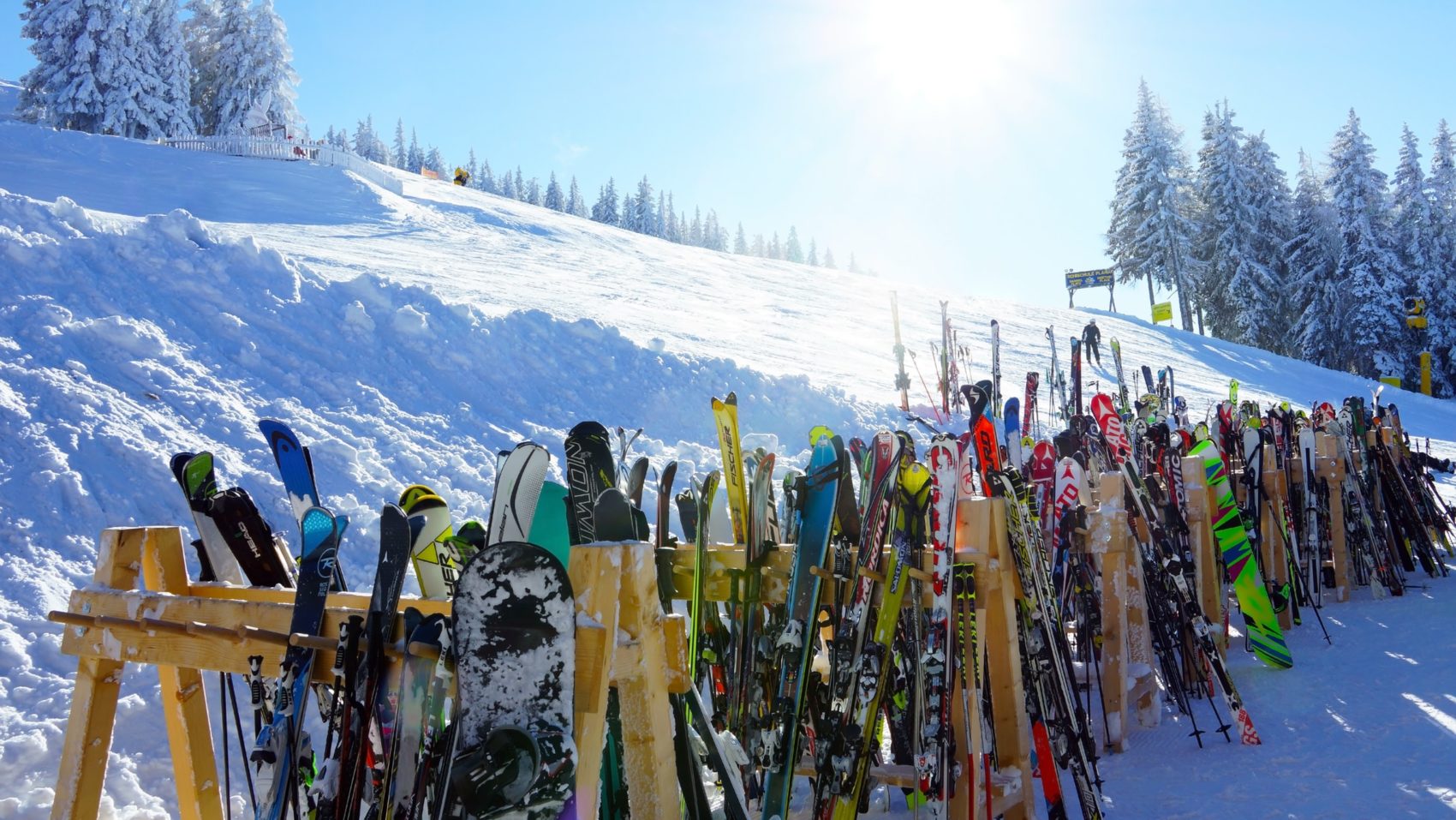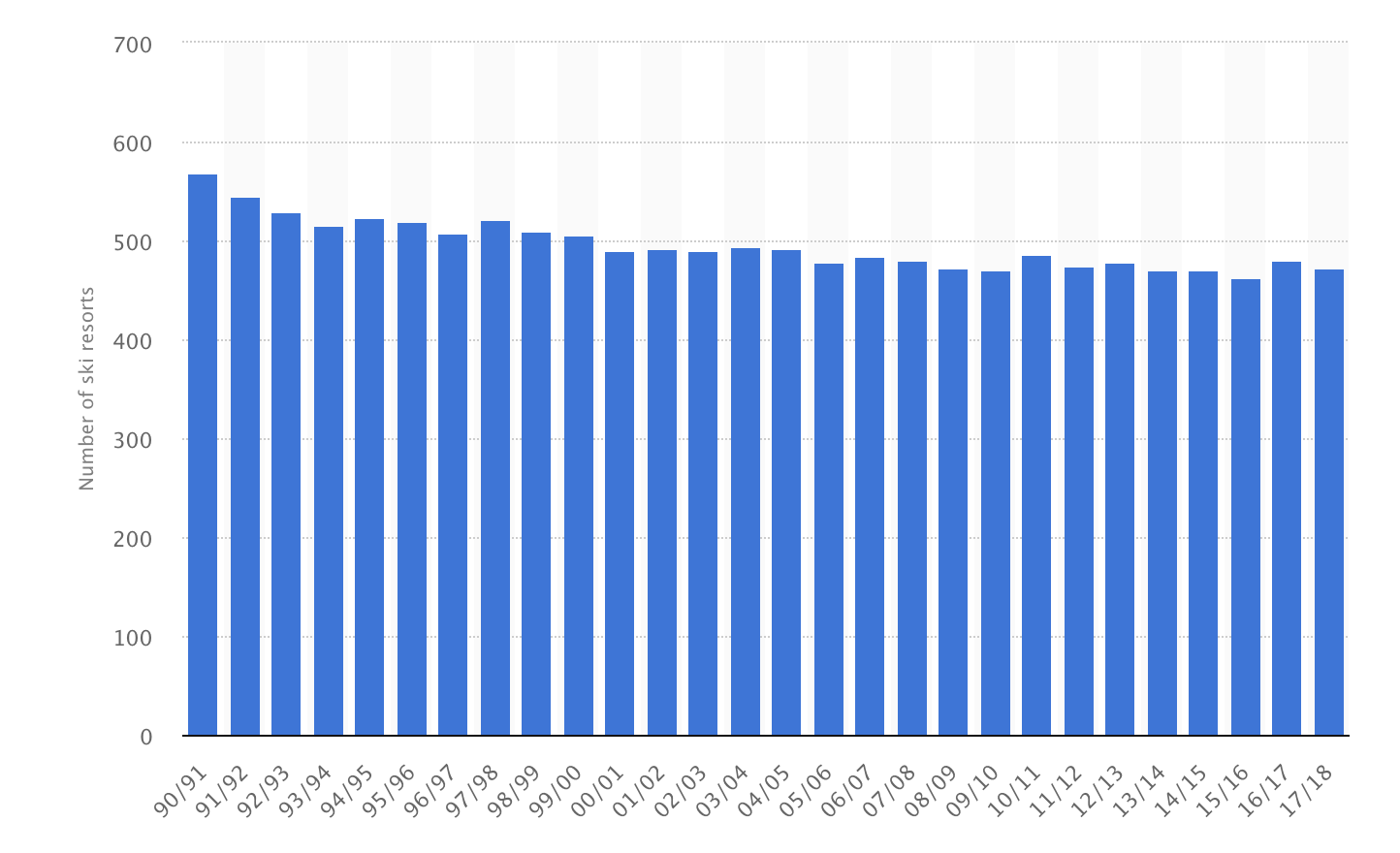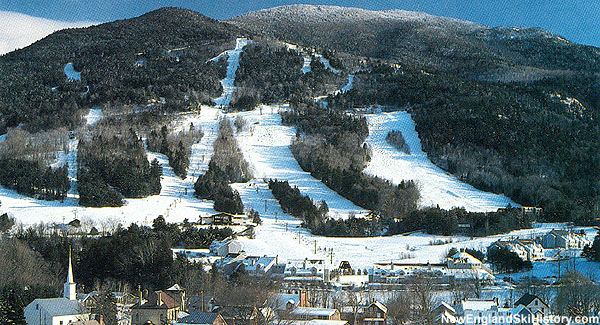
Ski resorts have been going out of business for as long as they’ve existed. Running and operating a ski resort has always been a tough task. It is largely weather dependent and competition between resorts is stiff. If consumers decide that they prefer the neighboring mountain to yours, then you may be out of luck.
Back in 2015, an article was published on this website discussing this very issue. It highlighted a study that analyzed all ski resorts in business at the time. The study found that since 1991, the number of ski resorts in the U.S. had fallen from 546 to 470.
Then it went on to categorize the 470 ski resorts into 5 categories based on the viability of the resort. Of the 470 resorts, 150 of them were classified as “Survivor” and another 150 were classified as “Sunset”, meaning that, according to this study, about two-thirds of the ski resorts in the U.S. were either just scraping by and breaking even or on their way out the door. This is a pretty BIG claim that would cause panic in just about any other industry.
However, 4 years later, the ski industry is still alive and well, and has in fact grown over the past several years. There are now 476 operating ski resorts, skier visits are up about 10%, and ski industry revenue is continuing to rise.

So that begs the question, why has reality contradicted this prediction? Well, there are a few things that need to be talked about.
First of all, the weather has taken a turn. The west coast is no longer in one of the worst snow droughts in recorded history and all across the country, we have seen good snow and long seasons. Ski resorts depend heavily on the weather for business and bad snow can make a resort that would otherwise seem fine look like it’s going out of business.
Second, consolidation of resorts has helped to keep stragglers alive as well as increase industry revenue. This has undoubtedly contributed to the upward trajectory of the industry in the past few years.
Third, the study highlighted above forgot to take into consideration one thing… Locals. There is no doubt that we are in the age of consolidation and commercialization in the ski industry. Vail and Alterra Mountain Company have completely changed the skiing landscape as they are able to offer collective passes with skiing around the globe for prices that smaller ski hills simply can’t compete with. However, that doesn’t mean everyone’s buying into it.
While the passes have clearly been very successful in terms of users and revenue, they have also had some issues, the biggest of which is crowding. We’ve seen reports of historic crowds and lift lines all across the country, and while that’s the price that you pay for easy access, it’s a price that many aren’t willing to pay.
That’s where local ski communities come into play. Everywhere that there are snow and mountains in the United States, there are groups of people who love to ski. And as the ski industry is becoming more commercial, more crowded and more overrun, these groups of people are moving towards private, lift lineless ski resorts.
You have certainly heard of this before. The Yellowstone Club in Montana is probably the most famous example. But we are starting to see more and more of this. On the more expensive side, Cimarron Mountain Club is Colorado’s first private ski resort. With a 2 million dollar buy-in, $50,000 in annual fees and limitation to 13 families, you are sure to have a crowd-free experience.
On the more realistic end of the spectrum, small towns and communities all over are banding together to create a smaller, less commercial ski experience. A place like Mount Ascutney in Vermont is a great example of a community coming together to create what they want to see.

Back in 2015, the town of Brownsville voted overwhelmingly to buy the Mt. Ascutney ski resort which had been forced to close in 2010. The hill was bought by the town and is managed by a non-profit. Through the support of the community, the resort has seen a complete overhaul including a new lodge, lift, T-bar, and groomers. Now the little town of Brownsville, Vermont has their own alternative to the long lines and tracked out runs that come with a collective pass.
While the big collective passes with probably continue to control much of the ski market, it is these small ski communities that will revitalize once broken down ski resorts and keep the industry climbing. I think it’s safe to say that skiing isn’t going anywhere. Even when things look bad, there will always be skiers out there with a will and a way.